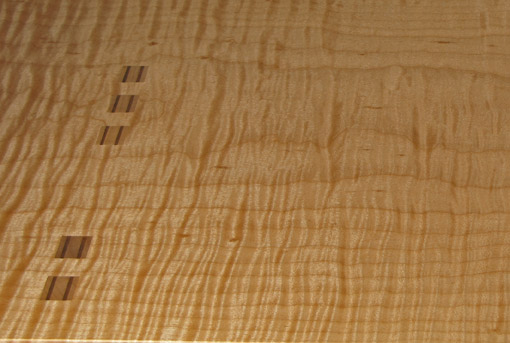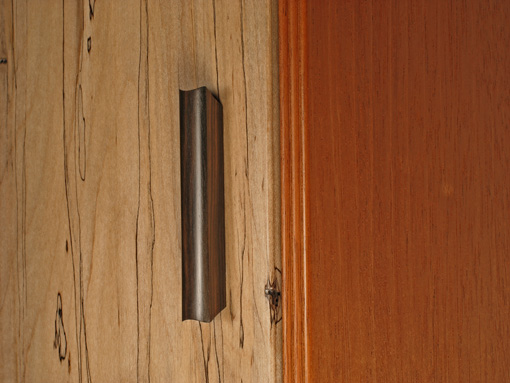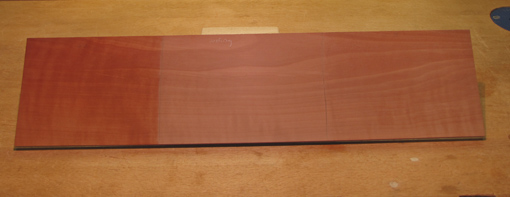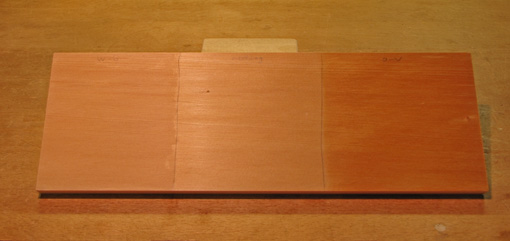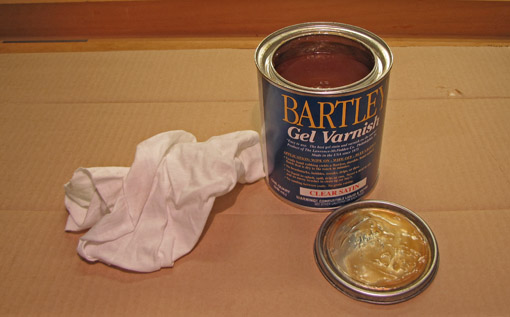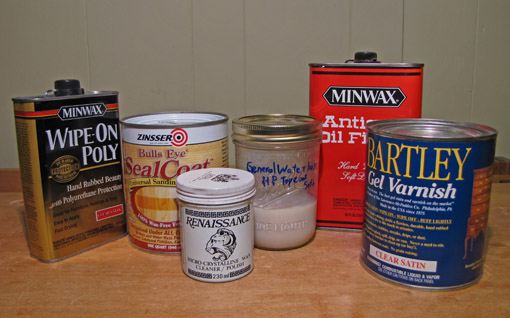It is a good thing to bring out the figure in wood, but there can be too much of a good thing. There can be a fine line between beautiful figure and blotching. The big leaf maple pictured above has knock-out curl. In experimenting with oil-varnish, I found that the curl became too exaggerated and areas of random blotching arose that detracted from the curl. Gel varnish avoided the problems and was enough to wonderfully bring out the curl. This beauty would have suffered from too much makeup.
The figured bubinga, below, on the other hand, is so rich and wild that oil-varnish (Minwax Antique Oil) worked well to deepen the overall color and bring out the dark elements in the patterns. Gel varnish over that produced a nice satin sheen. The darkened wenge trim (seen in the upper and lower left) further enhances the dark parts of the figure.
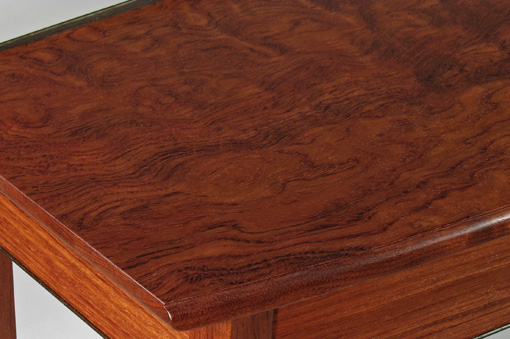
The red oak in the cabinet below, does not need more than gel varnish. In my opinion, the attractive rugged texture of oak looks best preserved with a thin film finish or just oil-varnish, rather than filled in like a sheet of ice on a black road. Sometimes, less is more.
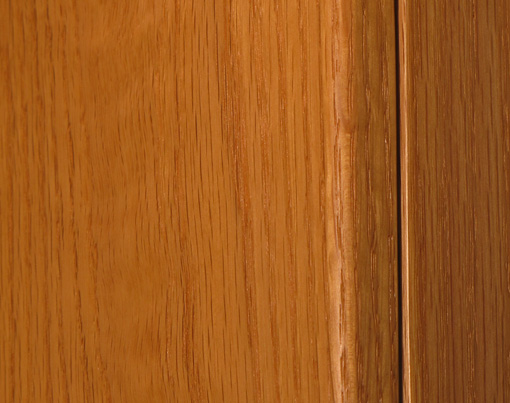
In planning the finish for a piece, the long term should also be considered. Woods darken over time to varying degrees. Also, the wear to which a piece is subjected will alter its character.
Cherry continues to darken to rich colors over the years. While this somewhat muddies its figure, most people like the look of old cherry. The cherry headboard, below, finished with oil-varnish years ago, developed a strong beauty which I captured on camera only somewhat successfully. Plan for what cherry will become.
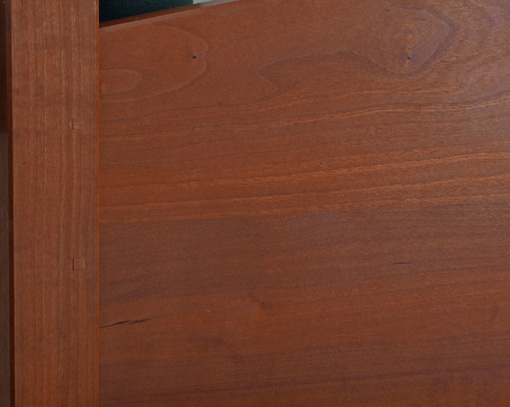
The bubinga letter opener, below, got a very fine finish sanding and a single coat of Watco Danish oil (which is actually an oil-varnish blend) years ago and has fended for itself very well with daily use since. Handling has burnished this dense species to an honest sheen. A film finish probably would have broken down irregularly and looked worn out instead of worn beautifully.
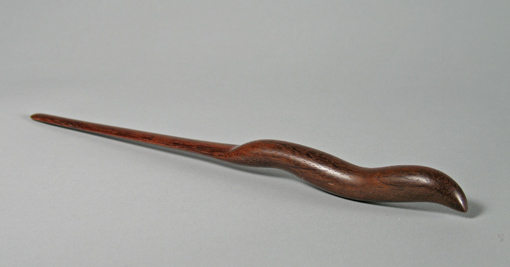
I still can’t say I’m fond of finishing, but I like the results. Working out finishing issues early in the project with testing and clear intention makes the process much more pleasant and reliable. And the project ain’t over till it’s finished.
Happy woodworking, dear readers.

